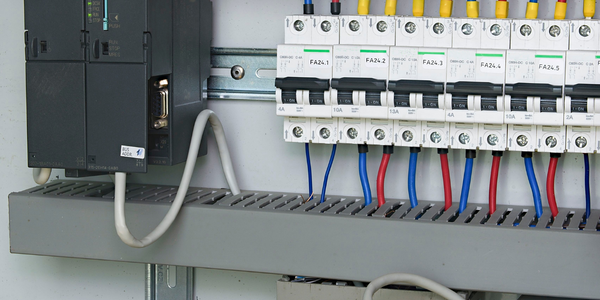Customer Company Size
Large Corporate
Region
- America
- Asia
Country
- United States
- China
Product
- JDA® Web Commerce
- JDA® Enterprise Architecture
Tech Stack
- Cloud Services
- E-commerce platform
Implementation Scale
- Enterprise-wide Deployment
Impact Metrics
- Cost Savings
- Revenue Growth
- Customer Satisfaction
Technology Category
- Platform as a Service (PaaS) - Application Development Platforms
- Platform as a Service (PaaS) - Connectivity Platforms
Applicable Industries
- Electronics
Applicable Functions
- Sales & Marketing
- Business Operation
Use Cases
- Supply Chain Visibility
Services
- Cloud Planning, Design & Implementation Services
- System Integration
About The Customer
Lenovo is a global personal technology company dedicated to developing exceptionally engineered personal technology. The company's global presence expanded dramatically when it acquired IBM’s personal computing (PC) division in 2005. This acquisition set the stage for rapid organic growth: building on its dominant position in China, the company’s revenue has since increased from US$13 billion in 2006 to US$21 billion in 2011. Lenovo's global customer base spans six continents. The company is recognized as the second largest PC provider in the world and continues to grow 40-50 percent ahead of the market, positioning it to potentially become the global PC market leader.
The Challenge
Lenovo, a global personal technology company, experienced a dramatic expansion of its global presence when it acquired IBM’s personal computing (PC) division in 2005. This acquisition set the stage for rapid organic growth, with the company's revenue increasing from US$13 billion in 2006 to US$21 billion in 2011. However, Lenovo faced a significant challenge in supporting its e-commerce initiatives for its global customer base, which spans six continents. The company's site availability was approximately 89 percent, meaning for every 100 hours, there were 11 hours in which it was unable to transact. This led to lost sales, customer satisfaction issues, and brand issues. Additionally, Lenovo needed a system that could handle unpredictable loads and scale dramatically based on seasonal events.
The Solution
Lenovo partnered with JDA Software and implemented its Web commerce solution on the JDA Agile Business Process Platform (ABPP), now part of JDA Enterprise Architecture. JDA Web Commerce enhanced the online buying process for Lenovo’s configurable technology products, enabling the company to make more reliable and profitable order promises to its customers. The solution also featured advanced pricing structures such as volume-based and special customer discounts, promotions, and other assorted pricing adjustments. Due to limited U.S. data center capacity at the time of implementation, Lenovo decided to deploy JDA’s Web commerce solution and platform via JDA Cloud Services. Today, JDA manages all of the hardware, software, and technology infrastructure behind Lenovo’s application of JDA Web Commerce and JDA ABPP. Lenovo also works with JDA Cloud Services to optimize the Web commerce solution based on feedback it receives from its customers.
Operational Impact
Quantitative Benefit

Case Study missing?
Start adding your own!
Register with your work email and create a new case study profile for your business.
Related Case Studies.

Case Study
Remote Temperature Monitoring of Perishable Goods Saves Money
RMONI was facing temperature monitoring challenges in a cold chain business. A cold chain must be established and maintained to ensure goods have been properly refrigerated during every step of the process, making temperature monitoring a critical business function. Manual registration practice can be very costly, labor intensive and prone to mistakes.

Case Study
Predictive maintenance in Schneider Electric
Schneider Electric Le Vaudreuil factory in France is recognized by the World Economic Forum as one of the world’s top nine most advanced “lighthouse” sites, applying Fourth Industrial Revolution technologies at large scale. It was experiencing machine-health and unplanned downtime issues on a critical machine within their manufacturing process. They were looking for a solution that could easily leverage existing machine data feeds, be used by machine operators without requiring complex setup or extensive training, and with a fast return on investment.

Case Study
Cloud Solution for Energy Management Platform-Schneider Electric
Schneider Electric required a cloud solution for its energy management platform to manage high computational operations, which were essential for catering to client requirements. As the business involves storage and analysis of huge amounts of data, the company also needed a convenient and scalable storage solution to facilitate operations efficiently.

Case Study
Leveraging the IoT to Gain a Competitive Edge in International Competition
Many large manufacturers in and outside Japan are competing for larger market share in the same space, expecting a growing demand for projectors in the areas of entertainment, which requires glamor and strong visual performance as well as digital signage that can attract people’s attention. “It is becoming more and more difficult to differentiate ourselves with stand-alone hardware products,” says Kazuyuki Kitagawa, Director of Service & Support at Panasonic AVC Networks. “In order for Panasonic to grow market share and overall business, it is essential for us to develop solutions that deliver significant added value.” Panasonic believes projection failure and quality deterioration should never happen. This is what and has driven them to make their projectors IoT-enabled. More specifically, Panasonic has developed a system that collects data from projectors, visualizes detailed operational statuses, and predicts issues and address them before failure occurs. Their projectors are embedded with a variety of sensors that measure power supply, voltage, video input/ output signals, intake/exhaust air temperatures, cooling fan operations, and light bulb operating time. These sensors have been used to make the projector more intelligent, automatically suspending operation when the temperature rises excessively, and automatically switching light bulbs. Although this was a great first step, Panasonic projectors were still not equipped with any capability to send the data over a network.









